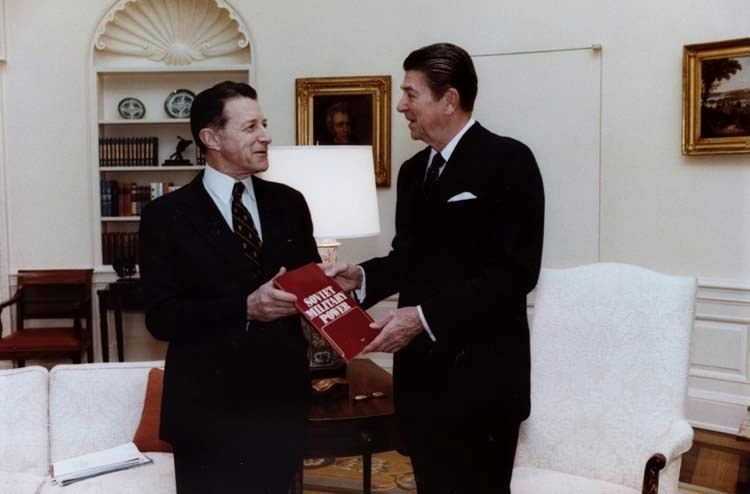 | ||
Soviet Military Power was a Public Diplomacy publication of the Defense Intelligence Agency (DIA), which provided an estimate of the military strategy and capabilities of the Soviet Union during the final years of the Cold War, ostensibly to alert the U.S. public to the significant military capabilities of the Soviet Armed Forces. First published in early October, 1981, it became an annual publication from 1983 until the collapse of the Soviet Union in 1991. Already in draft as the Soviet Union collapsed, the 1991 version was retitled "Military Forces in Transition". In addition to the majority English version, Soviet Military Power was translated, printed, and disseminated in a variety of languages, including German, French, Japanese, Italian and Spanish.
The report was produced annually by intelligence analysts and subject matter experts at DIA, incorporating all sources of intelligence from across the U.S. Intelligence Community. By direction, draft inputs were written at a classified level prior to being edited or downgraded by senior intelligence officers with the proper authorities. To illustrate the publication without revealing classified U.S. satellite imagery and sensor capabilities, DIA artists prepared approximately 150 detailed paintings of Soviet military hardware and installations specifically for the publication. Some of this original artwork is on display in the 4th floor museum area of the Defense Intelligence Agency Headquarters on Bolling Air Force Base, Washington, D.C.
Printing of the 100-page thick Soviet Military Power was traditionally handled by the Government Printing Office — the 1981's run numbered 36,000 copies, printed at a cost of $40,000. The booklets were widely distributed within the government and press, and could also be purchased by the general public at local United States Post Offices (in 1981, for $6.50). At the time of initial publication, Soviet Military Power constituted the largest release of declassified data in Pentagon history. According to Secretary of Defense Caspar Weinberger, Soviet Military Power did not constitute any form of propaganda aimed at supporting the increasing defense budgets of the Reagan Administration but was designed instead to alert the American public to a growing imbalance between the military capabilities of the United States and the Soviet Union. However, a 2016 publication in The National Interest shows this publication as largely a propaganda effort aiming at justifying the then-US defense buildup through an exaggerated presentation of the Soviet military power.
